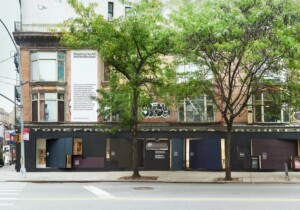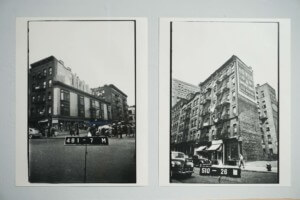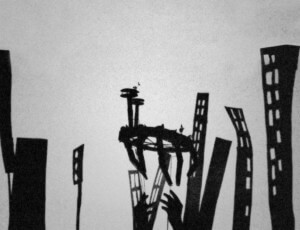New York City’s Storefront for Art and Architecture has a new executive director and chief curator, and it is writer and curator José Esparza Chong Cuy. Esparza will be stepping down from his post as curator at the Museum of Contemporary Art Chicago and will take over from Storefront’s interim director Jinny Khanduja (who will serve as deputy director) come November 1, 2018.
Esparza’s selection follows a summer-long search after Storefront’s previous director, Eva Franch i Gilabert, decamped for London earlier this year to lead the Architectural Association. Franch’s eight-year tenure at Storefront saw the nonprofit organization dramatically expand its fundraising activities, programming, lectures, and the variety of its shows (Full disclosure: The Architect’s Newspaper’s editor-in-chief William Menking serves on Storefront’s board).
AN spoke with Esparza on what led him to Storefront, his history with architecture and art, and what’s next for the well-known New York institution now that he’s at its head.
Esparza, who grew up in Mexicali and studied architecture in Guadalajara—a city deeply influenced by the legacy of modernist legends like Luis Barragán—was hugely marked by the city’s formalist approach to architectural practice at the time he was studying. This eventually motivated his move to New York City in 2007, where he interned at Storefront and eventually became a curatorial associate under the tenure of former director Joseph Grima.
That experience in his early years, according to Esparza, is what gave him a “completely different sense of the practice, both the limits and the possibilities.” A research fellowship at the nearby New Museum, his time spent writing for Domus, and the Master of Science he received in Critical, Curatorial, and Conceptual Practices in Architecture from Columbia University in 2012, helped expose Esparza to what he described as a radical new type of energy for the profession.

In 2013, Esparza co-curated the Lisbon Architecture Triennale and commissioned work by Frida Escobedo and Andrés Jaque, including Escobedo’s tilting civic stage and Jaque’s Superpowers of Ten. He attributed the experimental ideas he wanted to bring to the Triennale as stemming from his time at Storefront and the organization’s history.
So, what’s next for Storefront? In discussing the organization’s future, Esparza was sure to mention the “revolutionary” moment in the 1970s and ’80s where museums of contemporary culture sprung up one after another to exhibit work that wasn’t being shown anywhere else. The Studio Museum in Harlem was founded in 1968, El Museo del Barrio in 1969, the New Museum in 1977; Esparza explicitly connected the spirit of that moment to the existence of Storefront (founded in 1982).
“I think there is a huge opportunity in the flexibility that a small organization allows. I think it’s a really rare case in the landscape of cultural institutions, not just because it operates at the intersection of art and architecture, but also because it’s preserved its alternative voice. This might be one of the few remaining alternative spaces.
“I want to design a strong exhibition-based program that builds on itself, so that somehow, one after another, it unfolds this broader message. I want it to build bridges between not only context and geography, but disciplines and audiences.”
Esparza, who previously served as associate curator at Museo Jumex in Mexico City, mentioned that he would also like to expand Storefront’s programming beyond a regional scope to wherever groundbreaking work is occurring, “whether it’s in Chinatown or Caracas.” As the program unfolds, a message of what Storefront is working toward and what it stands for will, according to Esparza, become clear to the audience. Esparza stressed that he would look to bolster both Storefront’s experimental critical voice and its foundations, so that the institution could continue to flourish.
“We are thrilled to welcome José to the helm of Storefront, the very institution where he began his curatorial career over a decade ago,” said Charles Renfro, president of Storefront’s board of directors. “Since then, he has established himself as an innovative thinker working across disciplines in some of North America’s most prestigious cultural institutions.
“José’s rigor and insight will reinforce Storefront’s role as a crucial and necessary platform at the intersection of art and architecture. Through his background and experiences in Mexico, the U.S., and globally, he embodies the broad perspectives that Storefront has become known for, bringing a critical voice to contemporary issues at every scale—from local and regional to national and international. We are excited to have him lead the vision for Storefront’s future.”











